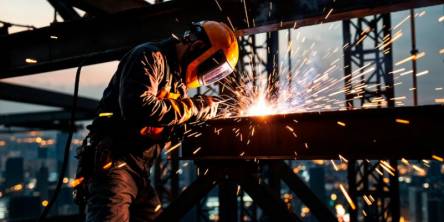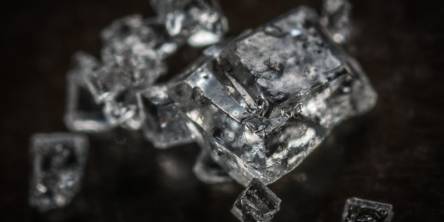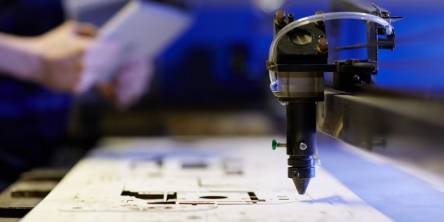Different Tooling Methods of Tungsten
Tungsten has density similar to uranium, gold and almost double than lead. Therefore, it is a perfect choice for use in ballast, vibration-damped tooling, radiation shielding, and sporting goods such as golf.
The parts of the aircraft are normally alloys built using powder of nickel, tungsten and iron which are sintered. These abrasive, stable and tough alloys can pose machining challenges.
Tungsten is one the high melting point metals and it has the lowest coefficient of thermal expansion. This gray-white element has high hardness and high density. Tungsten is the hardest material after diamond. It is also used in the filaments, electrodes, crucibles, etc. and many other mechanisms which require high heat resistance.
Manufacturing of machining and assembling parts for the aerospace industry was first started in 1960. This industry has evolved to become a supplier of services and parts for both rotary and fixed-wing aircraft. To machine tungsten, alloys companies need machining centers with excellent equipment of high rigidity and high torque at low spindle speeds.
Cutting tools and indexable inserts had to have extremely sharp cutting edges. Work holding equipment needed to have repeatability, vibration resistance, and quick-change capability.
Machining tungsten also brought out some additional essential factors: These include being creative and practical in problem-solving, being committed to the work and being versatile without losing focus.
The way of Cutting Tungsten:
Tungsten is commonly considered to have machinability as compared to gray cast iron because it produces sharp chips and abrasive. But, heavy tungsten alloy materials with lower percentages of tungsten and are more flexible than high percentage composition. They have a tendency to share the machining characteristics of stainless steels of similar hardness.
With high elastic stiffness, tungsten alloys need better cutting forces than other metals; therefore, stiff tooling and adequate spindle torques are vital for effective machining. Some low percentage tungsten alloys are flexible to the point that they generate undamaged chips when machined. The machine tool used to cut tungsten must be resistant to vibration and is rigid.
Tool choice is equally important. You need a high, cutting-edge and right carbide coating and grade. Because of the high density of the material, you need to shear it. You have to keep the tools sharp, a dull tool just slips the material away. Coolant is also an important consideration for tungsten machining.
Rotor Part Fixturing:
Tough tungsten job includes machining a weight of the rotor of a helicopter. This metal piece measures roughly 6.5 by 2.7 inches and consists of a very high-percentage of tungsten alloy. Most of the parts in a rotor is hollow, with a compact space at the back of the interior requires a finishing tool to reach about 6 inches.
Being the high melting point metal, this operation is mainly vulnerable to the tool chipping caused by vibration. A Kennametal modular tool is used with a 1-inch-diameter cutter that’s threaded into on a carbide bar. To increase firmness and minimize trembling, the shank mounted in an HSK shrink-fit holder.
Each metal piece bolts to a plate that has a bushing, which clamps into a linking receiver on the tombstone. A pin with flexible balls at the end inserts from the bushing to align the metal piece precisely. The fixturing system aligns parts repeatedly. This fixture enables the metal piece to be loaded and unloaded quickly to lessen the setup time.
Custom Tooling of Tungsten:
Industries mill the deep central slot of the tungsten with a custom-made Kennametal tool, having two parallel slotting cutters mounted on a single HSK 100 shank.
After assembling the tool that measures 13 inches in diameter and is too big to fit in a machine’s tool changer space. To use the sharp edge cutter, the machine is programmed to rotate the tombstone into position and plan the spindle opening onto the uncovered tool holder taper.
When the operation is complete, the machine replaces the tool in the mounting station. Formerly, the 50 lb cutter had to be loaded and unloaded by hand, a task for two people. The custom designed cutter machines the base of the slot between the two sides of the element.
At one end the complete width of the cutter engages the base, so it needs a lot of torque to constrain through the tungsten.
Similar Articles
When you see a steel ship in the harbor, the first impression is usually sheer scale.
Explore CNC turning—its components, process, benefits, applications, and future trends shaping modern precision manufacturing in various industries.
In the competitive industry of car manufacturing, attaining exceptional performance along with an innovative design needs the incorporation of modern manufacturing technologies
Facing delays, quality issues, or supply chain problems in hardware manufacturing? Learn the top 7 challenges—and practical fixes—to streamline production.
In the rapidly advancing landscape of high-tech manufacturing, electronics, and materials science, diamonds are no longer just gemstones they’re high-performance materials redefining what’s possible in technology.
A business in the manufacturing industry today has to ensure that it chooses the precision-engineered components suppliers keenly since the competition is very stiff
Selective Laser Sintering, or SLS, has established itself as one of the most reliable and widely used 3D printing technologies. This method is valued for its ability to produce complex, durable, and high-quality parts without the constraints of traditional manufacturing.
In the retail and display industry, the visual appeal of products is paramount. Customers are constantly drawn to displays that are not only eye-catching but also provide an immersive experience.
As previously established, CO2 laser technology operates by shining a high-power infrared beam on a mixture of gas that contains carbon dioxide, nitrogen, and helium. This technology is well known for the fact that it is able to engrave onto a variety of materials such as wood, glass, plastic, leather, and even some metals with high precision and without contact.









